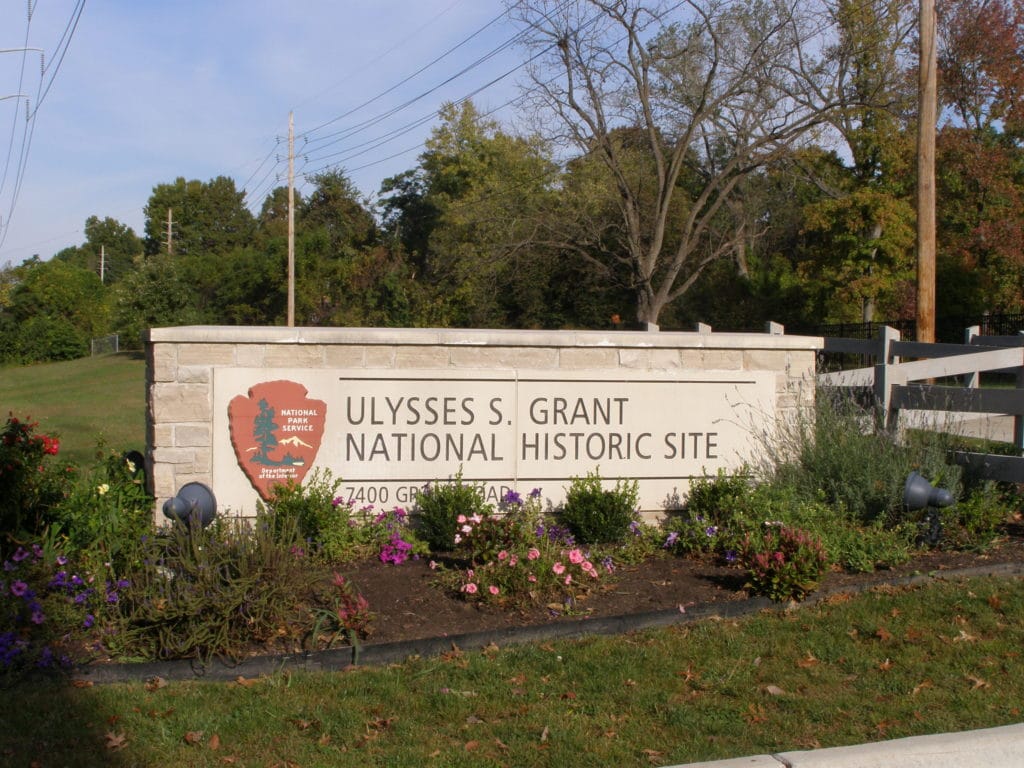
Article Summary: Historic Sites In Missouri
Historic Sites In Missouri. More Than Just Parks has 10 incredible must-see sites for you to visit.
I’ve been to so many of these amazing places since retiring from teaching in 2018. Did I mention that I taught history? I spent a lifetime teaching about the history behind these momentous sites. Then I got to see them firsthand. And now I’m sharing the stories of these incredible places with you. It doesn’t get any better than that!
I’m going to give you my list of the 10 Historic Sites In Missouri that you’ll want to see.
To be clear, this list includes national park sites (as in sites managed by the National Park Service) as opposed to national parks. It also includes sites not managed by the National Park Service. After all, we’re more than just parks!
If you are planning a trip to Missouri then you might want to pick up a copy of Missouri State Parks and Historic Sites: Exploring Our Legacy, Second Edition by Susan Flader.
Without further ado, let’s dive in.
Table Of Contents: Historic Sites In Missouri
Top 10 Historic Sites In Missouri
10. Mutual Musicians Foundation Building
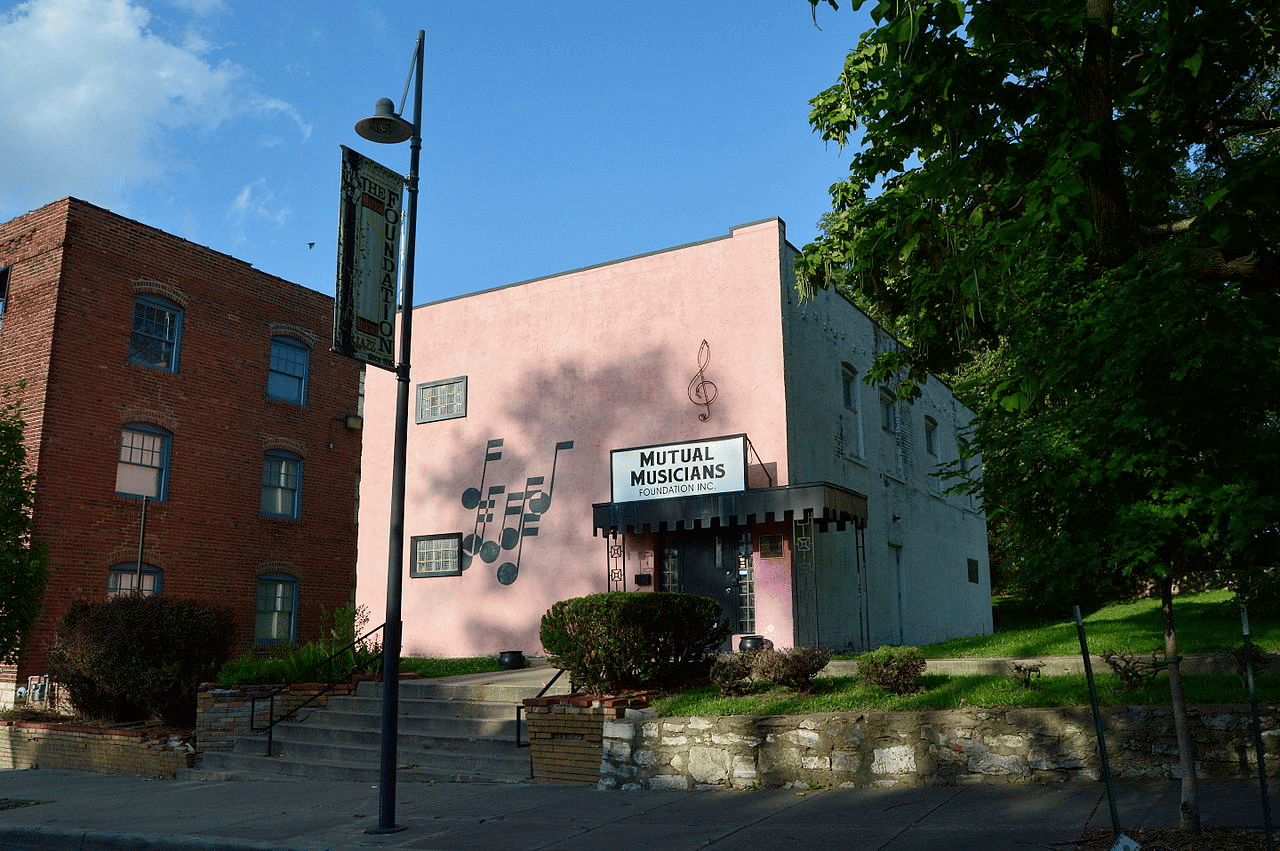
Missouri is the “Show Me” state. More Than Just Parks is going to show you the Top 10 Historic Sites In Missouri. We’re very excited about our list and we’re kicking it off at #10 with the Mutual Musicians Foundation Building.
The Mutual Musicians Foundation Building, also known as the “18th and Vine Historic District” or the “Kansas City Jazz Walk of Fame,” is a historic building located in the 18th and Vine neighborhood of Kansas City, Missouri.
The building was constructed in 1910 and served as the headquarters of the Local 627 of the American Federation of Musicians. The building was used as a meeting place for jazz musicians and as a venue for live music performances.
A Significant Center Of Jazz Music
The 18th and Vine neighborhood was a significant center of jazz music in the early 20th century, and it was home to many of the most prominent jazz musicians of the time, including Count Basie, Benny Moten, and Charlie Parker.
The Mutual Musicians Foundation Building was an important gathering place for these musicians, and it was a key part of the vibrant jazz scene in Kansas City.
The building was closed in the late 1970s and fell into disrepair, but it was eventually purchased and restored by the Mutual Musicians Foundation, a non-profit organization established to preserve the building and the legacy of jazz music in Kansas City.
The building was re-opened in 2001 and now serves as a museum and cultural center, with exhibits on the history of jazz music in Kansas City, a performance space, and a jazz education program.
The Mutual Musicians Foundation Building is an important historical and cultural landmark, preserving the history of jazz music in Kansas City and its contributions to the development of this genre.
The building is open to the public, and it is a popular destination for jazz enthusiasts and history buffs.

9. Patee House
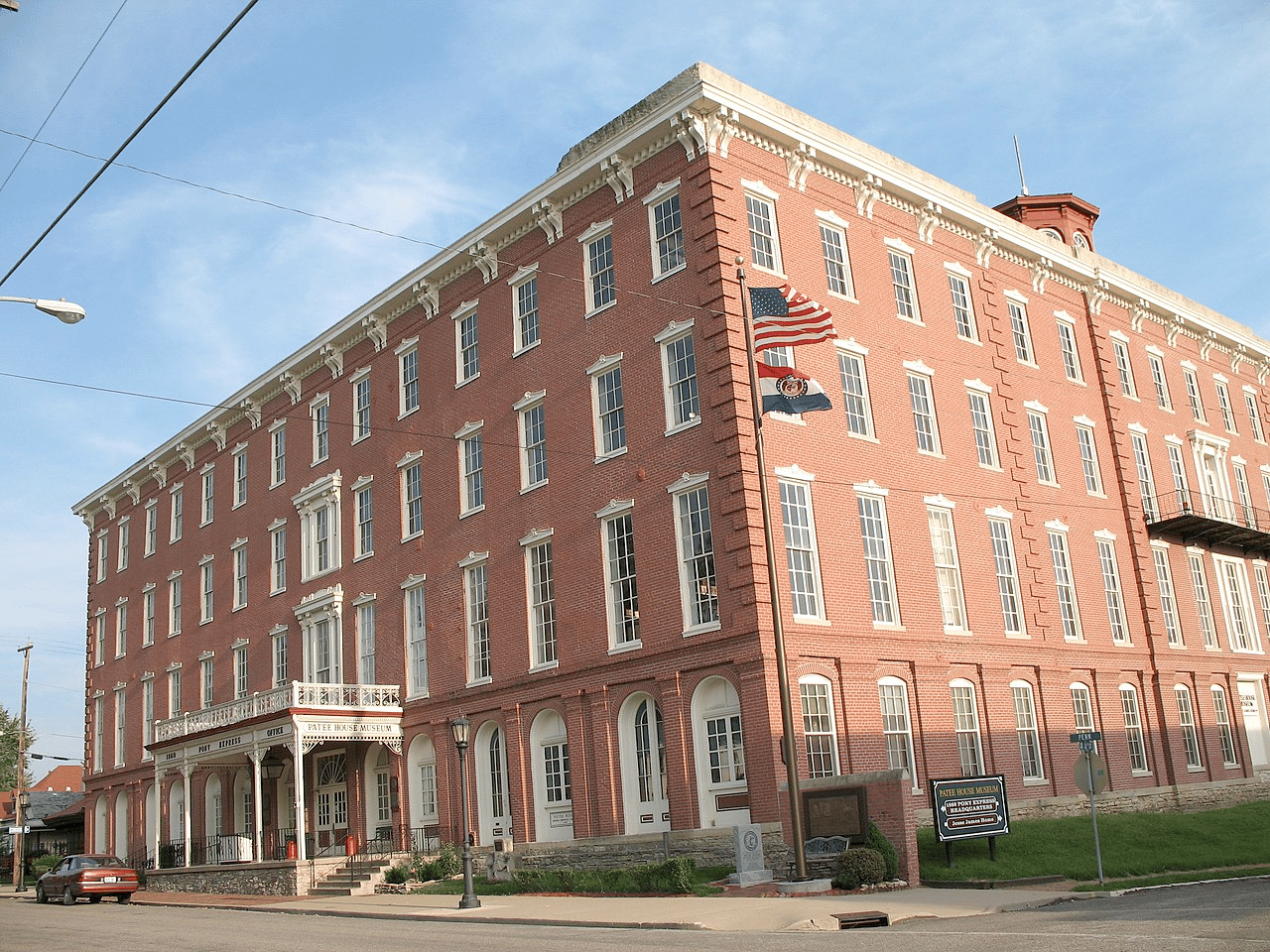
We’re moving on from the story of Jazz to the days of the Pony Express & Westward Expansion. And we’ve selected a great site which helps to this story is a grand style. At #9 on our list of the Best Historic Sites In Missouri is The Patee House.
It’s a historic building located in St. Joseph, Missouri. It was built in 1858 as a luxury hotel, known then as the Patee House Hotel, during the height of the Pony Express and the days of westward expansion.
The hotel was one of the most luxurious in the West and was known for its grand ballroom, fine dining and luxurious guest rooms. The hotel was also home to the first telegraph office in St. Joseph, and it served as a hub for communication and information during the Civil War.
During the American Civil War, the Patee House served as a hospital for wounded soldiers and was a center for political and social activity.
After the war, the hotel continued to be a popular destination for travelers, but it gradually fell into disrepair. In the early 20th century, the hotel was converted into a boarding house and later into apartments.
Learn About The History Of The Pony Express
In the 1970s, the Patee House was restored and converted into a museum.
The museum features exhibits on the history of the Pony Express, the American West and the Civil War, as well as the history of the Patee House and its role in the development of St. Joseph.
It also features a collection of artifacts, photographs, and memorabilia related to the history of the American West.
The Patee House is a significant historical and architectural landmark and is listed on the National Register of Historic Places. The museum is open to the public and it is a popular destination for history buffs and those interested in the history of the American West.
8. Missouri Botanical Gardens
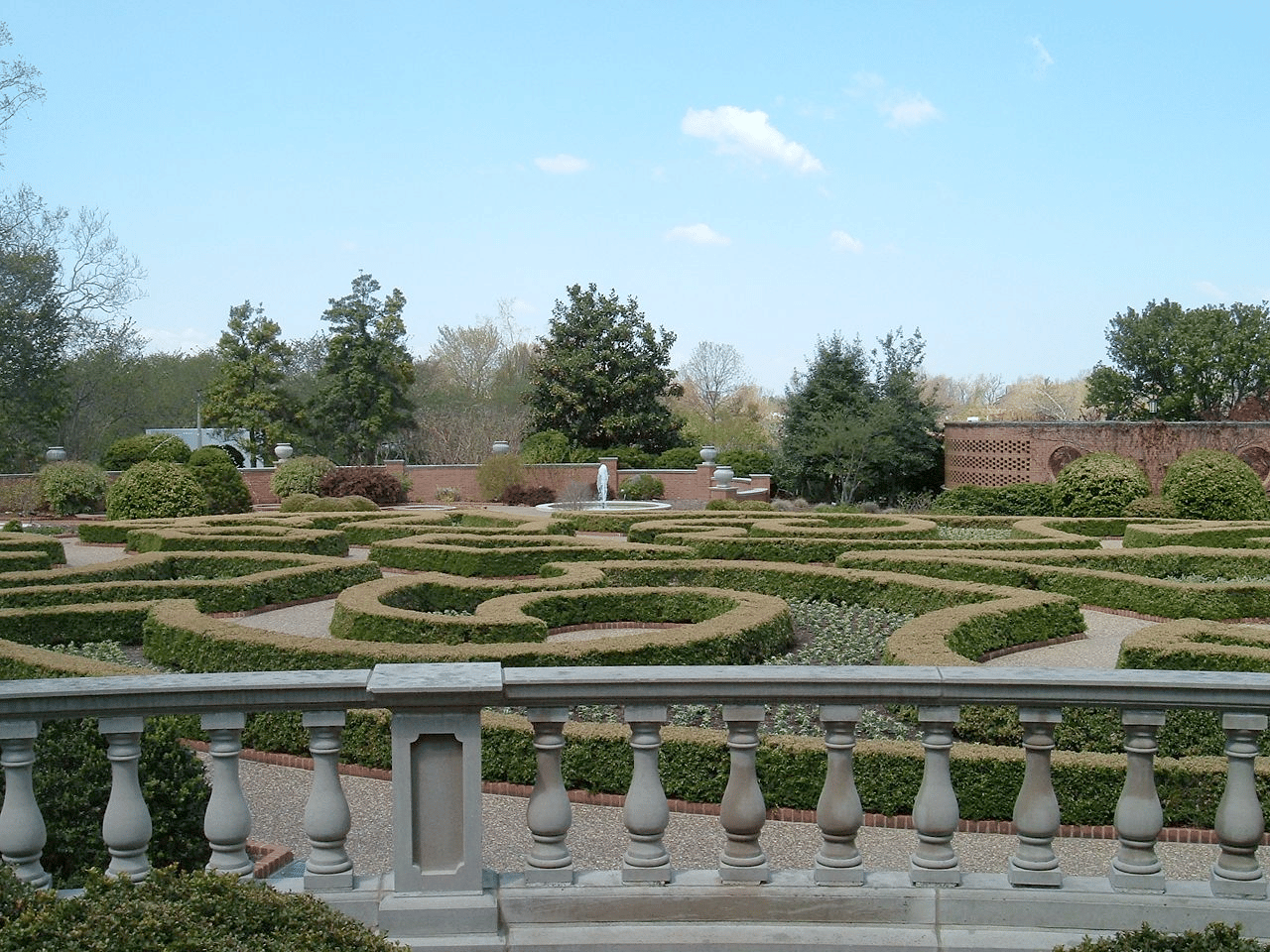
One of our goals when we prepare our lists is to combine different sites which represent different historic events and topics of interest. In other words, we want to offer something for everyone. Our next historic site is a case in point.
At #8 on our list of the Best Historic Sites In Missouri is the Missouri Botanical Gardens.
The Missouri Botanical Gardens, also known informally as Shaw’s Garden, is a botanical garden located at 4344 Shaw Boulevard in St. Louis, Missouri. It was founded in 1859 by philanthropist Henry Shaw.
The Garden is one of the oldest botanical gardens in the United States. It’s not only a National Historic Landmark, but also registered on the National Register of Historic Places.
Things To Do
Here are some of the things you can do at the Missouri Botanical Garden:
- Explore the Garden’s grounds: The Missouri Botanical Garden features 79 acres of beautifully manicured gardens and landscapes, including the Japanese Garden, Climatron, the Chinese Garden, and the English Woodland Garden.
- Visit the Climatron: The Climatron is a geodesic dome greenhouse that houses a tropical rainforest. It’s a great place to explore and see a variety of exotic plants and animals.
- Tour the Kemper Center for Home Gardening: The Kemper Center is a resource center for home gardeners, featuring interactive exhibits and displays on a variety of gardening topics.
- Visit the Butterfly House: The Butterfly House is a tropical conservatory that features hundreds of live butterflies from around the world.
- Attend a concert or special event: The Garden hosts a variety of concerts, festivals, and special events throughout the year, including the Garden Glow holiday light exhibit.
- Take a guided tour: The Garden offers a variety of guided tours, including a tram tour, a walking tour, and a photography tour.
- Visit the Children’s Garden: The Children’s Garden is a fun and interactive space for kids to explore and learn about plants and nature.
- Attend a class or workshop: The Garden offers a variety of classes and workshops on topics such as gardening, cooking, and art.
- Visit the Plant Science Center: The Plant Science Center is home to the Garden’s research and conservation efforts, and features exhibits and displays on plant science and conservation.
- Relax and enjoy the beauty: Whether you’re strolling through the gardens, enjoying a picnic, or simply taking in the scenery, the Missouri Botanical Garden is a wonderful place to relax and enjoy the beauty of nature.
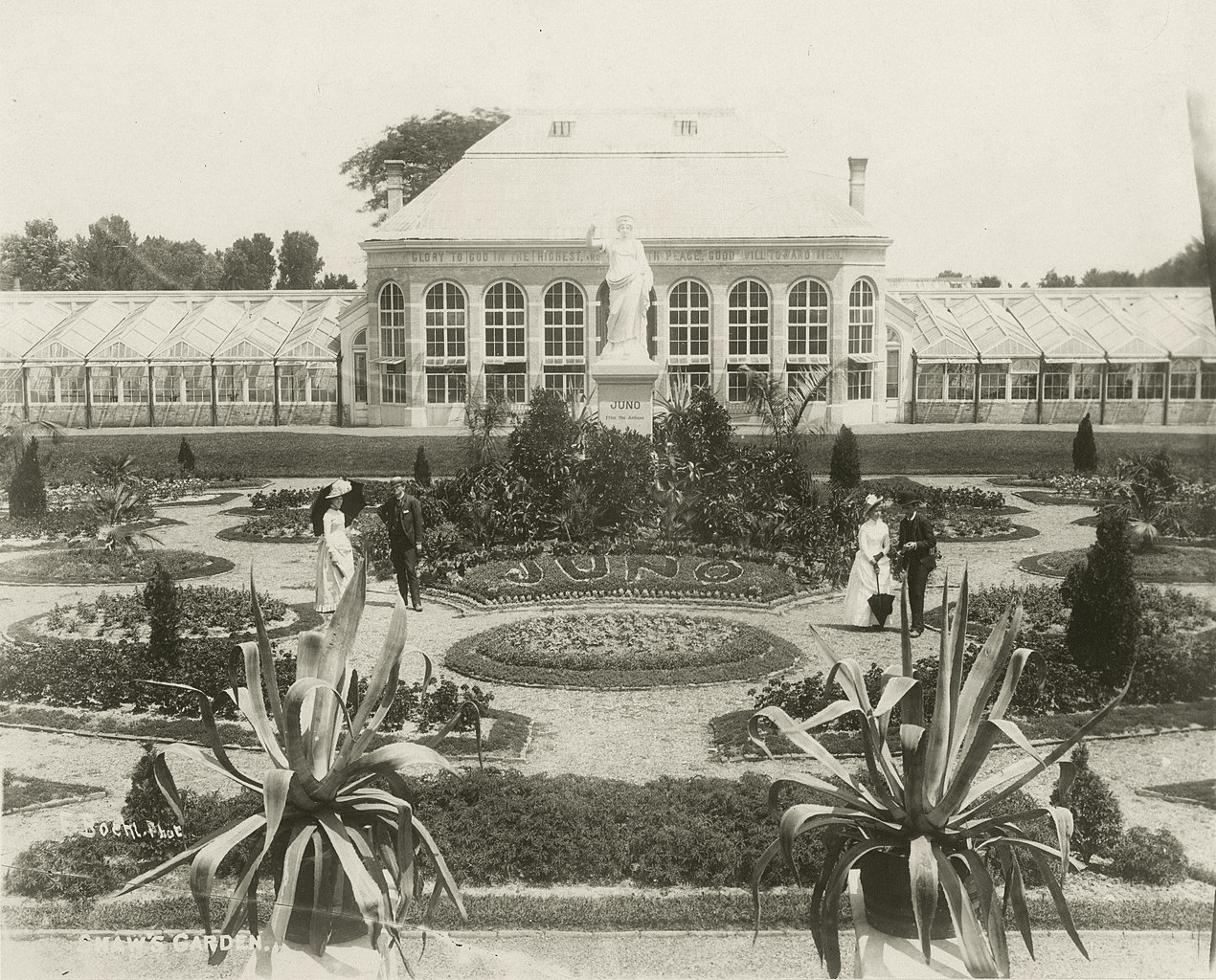
7. Laura Ingalls Wilder Home & Museum
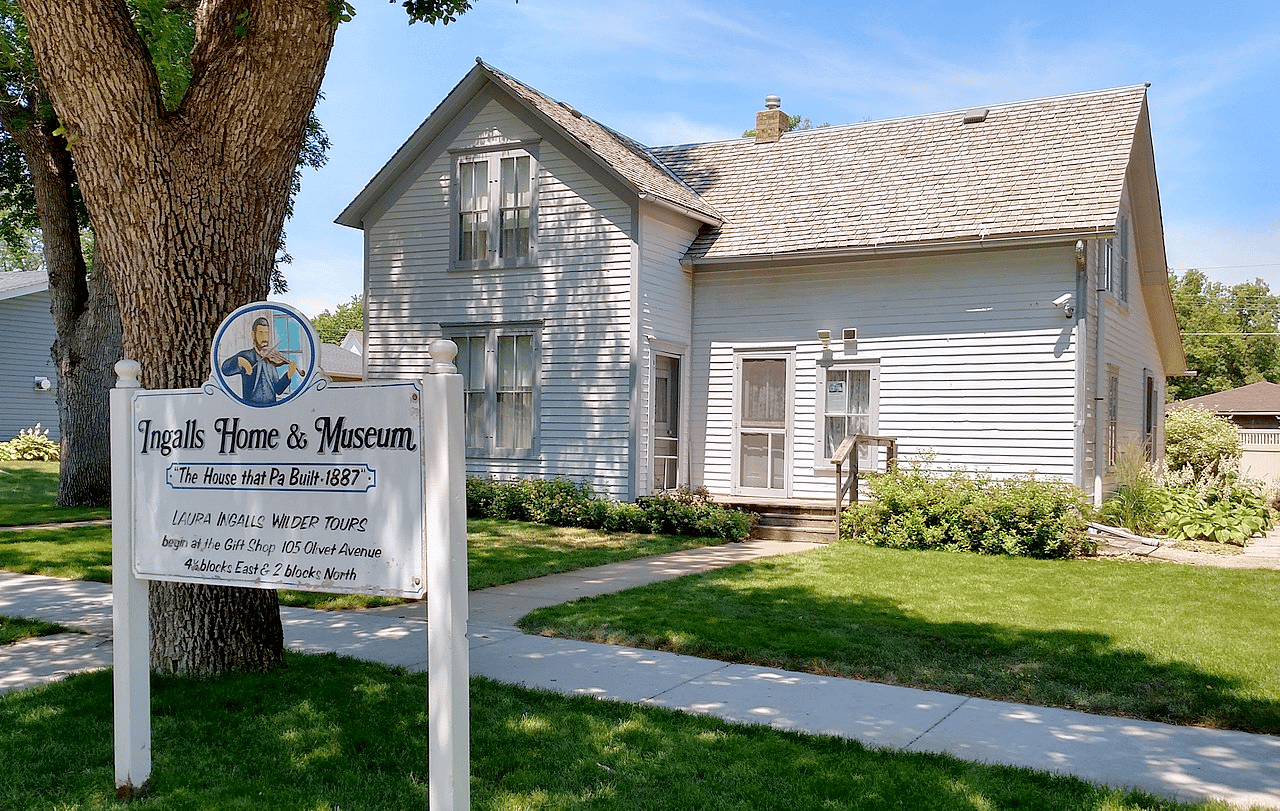
Our next historic site is a favorite with people who remember the popular 1970s television series “Little House On The Prairie.” Starring Michael Landon, the series was based on the family of Laura Ingalls Wilder who wrote a series of books by the same name.
At #7 on our list of the Best Historic Sites In Missouri is the Laura Ingalls Wilder Home & Museum.
The Laura Ingalls Wilder Home & Museum is a historic site located in Mansfield, Missouri that celebrates the life and work of Laura Ingalls Wilder, the author of the beloved “Little House on the Prairie” books. The site consists of the Ingalls family home, a museum, and several other historic buildings.
Laura Ingalls Wilder was born in Wisconsin in 1867 and spent much of her childhood traveling with her family across the American Midwest. In 1894, she married Almanzo Wilder and settled in Mansfield, Missouri, where they lived for the rest of their lives.
It was in Mansfield that Wilder began writing her famous books about her childhood experiences, which would go on to become beloved classics of children’s literature.
See The Place Where Laura Ingalls Wilder Spend The Last 60 Years Of Her Life
The Ingalls family home in Mansfield was built in 1894 and is where Laura Ingalls Wilder lived for the last 60 years of her life. After her death in 1957, the home was turned into a museum, and it has been open to the public ever since.
The museum features exhibits on Wilder’s life and the history of the area. Visitors can see the original manuscript of “Little House on the Prairie” and other artifacts related to Wilder’s life and work.
The site also includes several other historic buildings, including a one-room schoolhouse and a post office, which have been preserved to give visitors a glimpse of what life was like in rural Missouri in the late 19th and early 20th centuries.

6. Mark Twain Boyhood Home & Museum
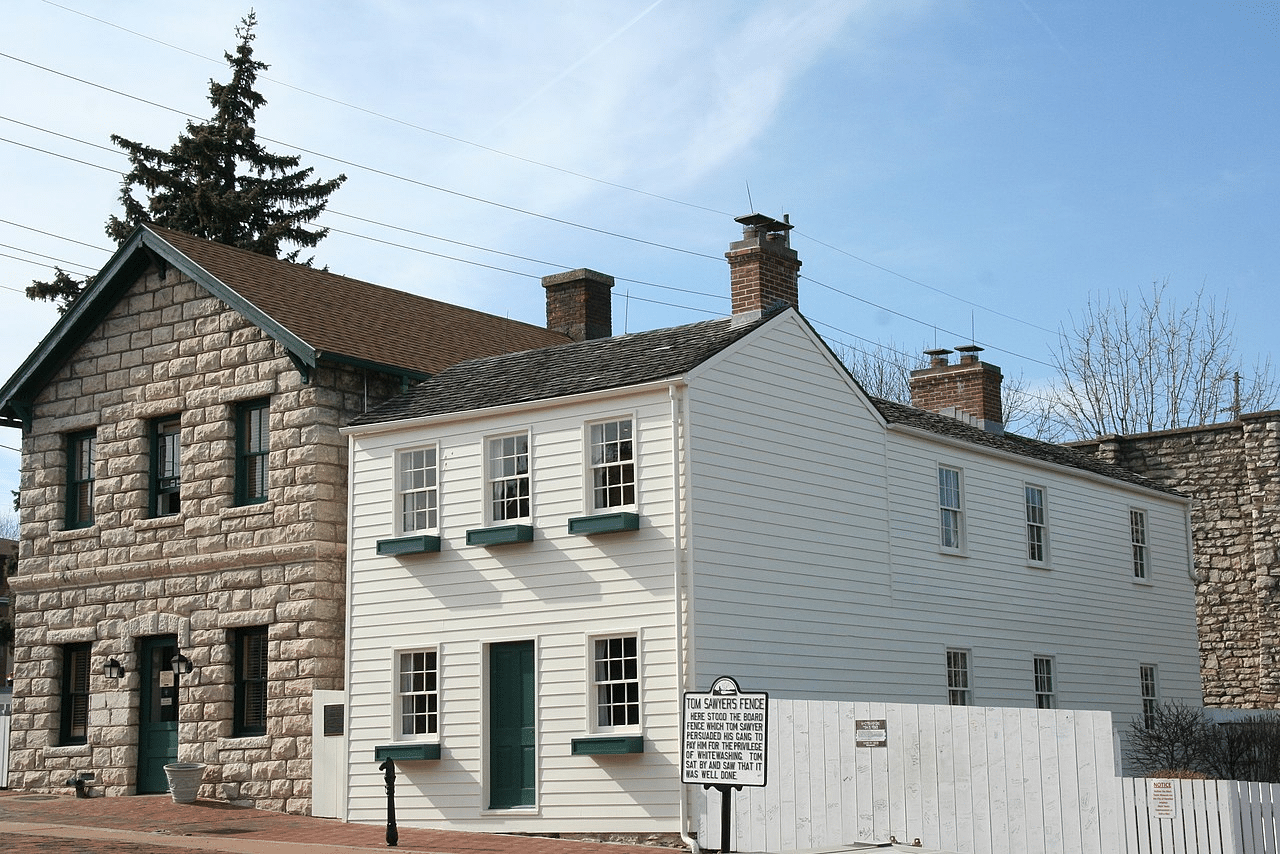
We move from one literary legend to another though we suspect that this one needs no introduction. At #6 on our list of the Best Historic Sites In Missouri is the Mark Twain Boyhood Home & Museum.
The Mark Twain Boyhood Home & Museum is a museum located in Hannibal, Missouri, that commemorates the life and legacy of Samuel Clemens, also known as Mark Twain, one of America’s most famous and celebrated authors.
The museum is located in the boyhood home of Samuel Clemens, where he lived from 1844 to 1853 and it is dedicated to preserving the history and legacy of Mark Twain and his connection to Hannibal.
Mark Twain spent his childhood and adolescence in Hannibal and it was the inspiration for many of the settings and characters in his most famous works, such as “The Adventures of Tom Sawyer” and “The Adventures of Huckleberry Finn.”
It also features exhibits on Mark Twain’s life and works, including artifacts, photographs, and memorabilia related to his childhood and his connection to Hannibal.
The Museum Offers A Variety Of Educational Programs, Tours and Special Events Throughout The Year
The museum’s collection includes Mark Twain’s boyhood home, the Mark Twain Museum, the Becky Thatcher House, and the Grant’s Drug Store, all of which are open to the public and offer a glimpse of the world that helped shape Mark Twain’s imagination.
It also offers a variety of educational programs, tours, and events throughout the year, including guided tours of the boyhood home and other sites, as well as special events and lectures related to Mark Twain and his works.
The Mark Twain Boyhood Home & Museum is an important cultural and historical landmark, preserving the legacy of one of America’s most celebrated authors and it’s a popular destination for literature enthusiasts and history buffs.
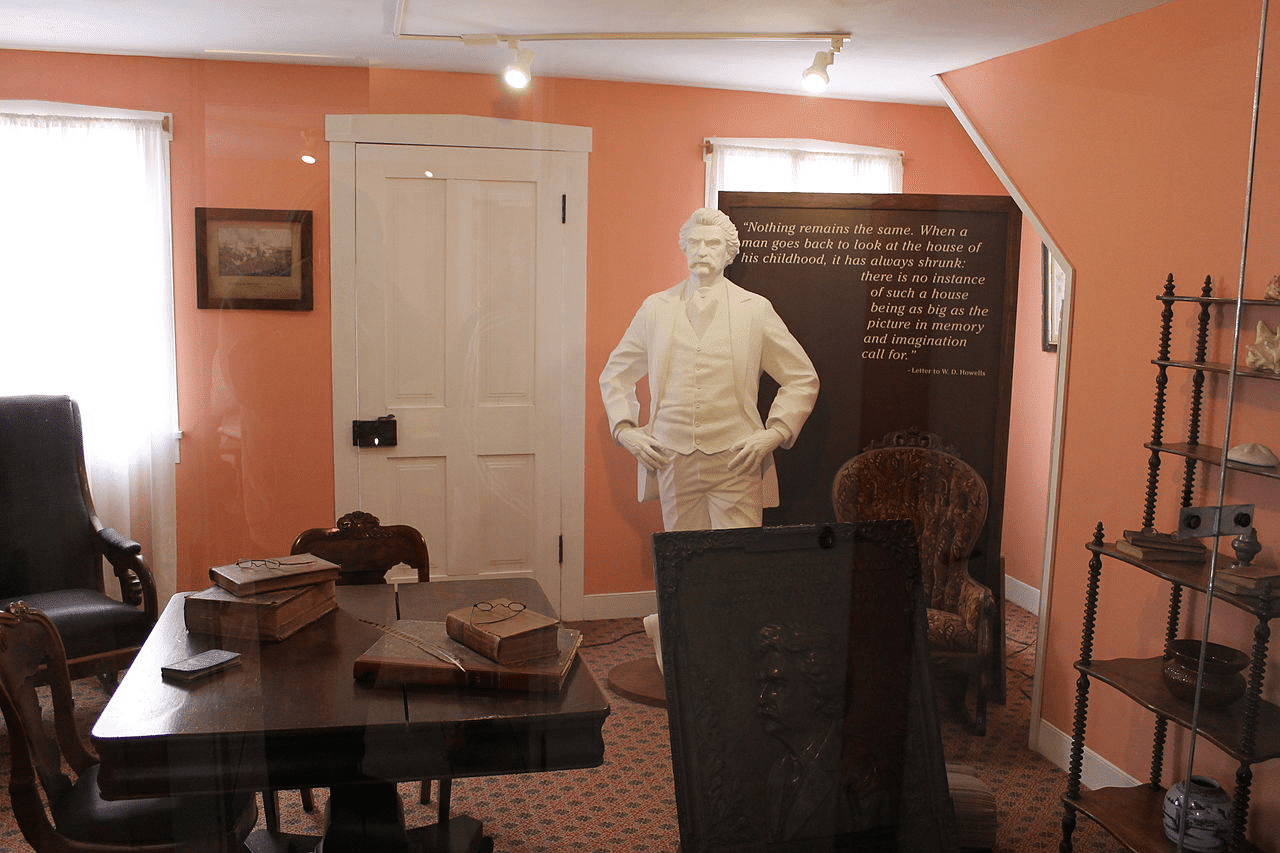
Top 5 Historic Sites In Missouri
5. Wilson’s Creek National Battlefield

We’re on to the Top 5 Historic Sites In Missouri. At #5 we have selected a place which commemorates one of the battles of the American Civil War – the bloodiest conflict in American history. It’s Wilson’s Creek National Battlefield.
Wilson’s Creek National Battlefield is a national battlefield located near Republic, Missouri, that commemorates the American Civil War Battle of Wilson’s Creek, which took place on August 10, 1861.
The battle was one of the first major engagements of the Civil War in the Western Theater, and it resulted in a Confederate victory.
The battle was fought between the Confederate Army of Missouri, led by General Sterling Price, and the Union Army of the Southwest, led by General Nathaniel Lyon.
A Significant Victory For The Confederacy
The battle was a significant victory for the Confederacy, as it prevented the Union army from advancing further into Missouri and established Confederate control over the state.
However, the battle also resulted in heavy casualties on both sides, with over 2,500 soldiers killed, wounded or missing. The battle marked the first time that a general from the Union army was killed in action in the Civil War.
Wilson’s Creek National Battlefield was established in 1960, and it includes a visitor center with exhibits and artifacts related to the battle and the Civil War.
The park also includes a 5-mile self-guided tour road that takes visitors to the key areas of the battlefield and includes interpretive markers that provide information on the battle and the troops who fought there. There are several monuments, memorials, and markers dedicated to the soldiers who fought in the battle.
Wilson’s Creek National Battlefield is managed by the National Park Service, and it is open to the public for tours and educational programs.

RELATED: 10 BEST Civil War Sites In America
4. George Washington Carver National Monument
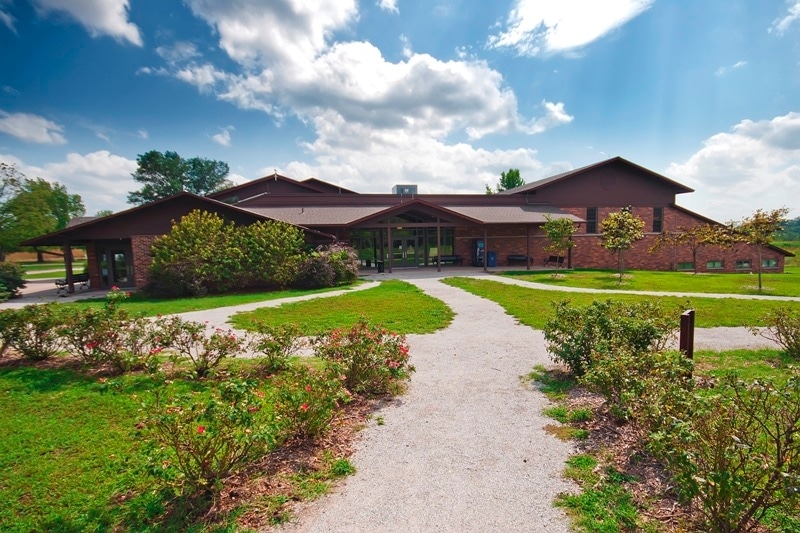
We’re on to the “Final Four” and at #4 we have a site which celebrates the life and legacy of George Washington Carver. It’s the George Washington Carver National Monument.
George Washington Carver was an American scientist, educator, and inventor. He was born into slavery in Missouri in the mid-1860s, but was able to overcome the obstacles of racial discrimination to become one of the most prominent scientists of his time.
Carver is best known for his pioneering research on peanuts and sweet potatoes, which led to the development of new products and helped to improve the lives of many farmers in the South. He also developed a variety of other products from crops such as soybeans, pecans, and sweet potatoes.
Carver was an advocate for racial equality and education, and he was a respected teacher and mentor to many young African American students.
Learn About The Life & Times Of George Washington Carver
The George Washington Carver National Monument was established in 1943, and it includes a visitor center with exhibits and artifacts related to the life and work of George Washington Carver.
The park also includes a nature trail that takes visitors through the beautiful Ozark landscape and includes interpretive markers that provide information on the natural history of the area. There’s also includes a replica of Carver’s one-room schoolhouse, where he received his early education.
The George Washington Carver National Monument is managed by the National Park Service, and it is open to the public for tours and educational programs.
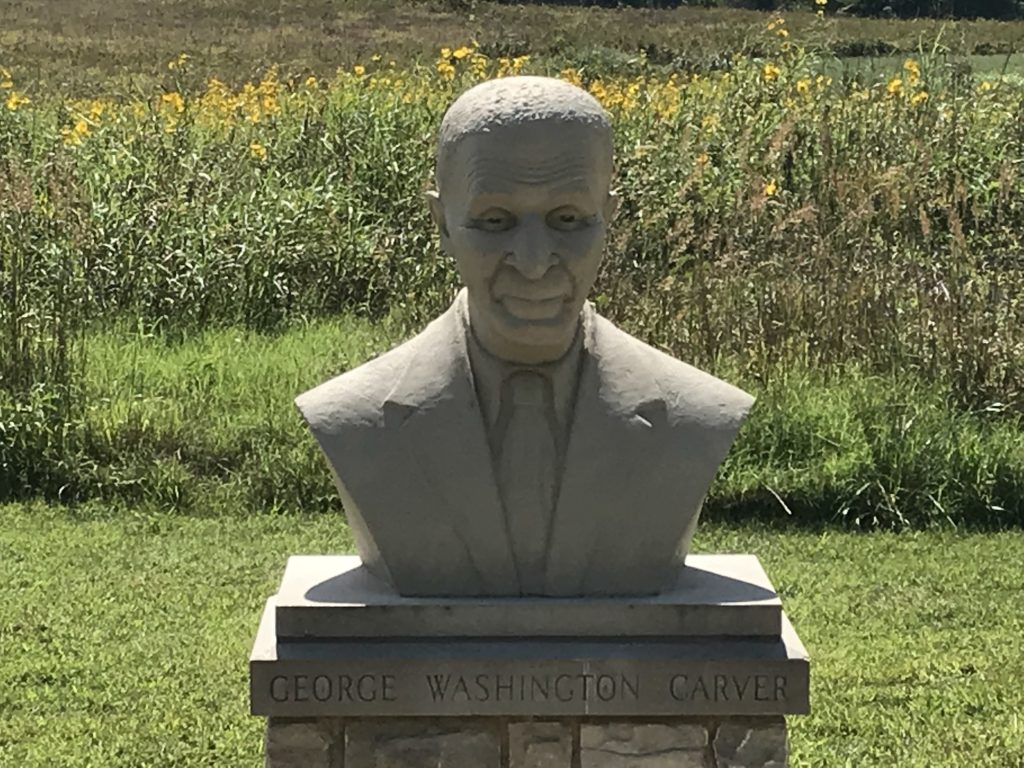
RELATED: 10 MUST-SEE Historic Sites In Alabama
3. Ulysses S. Grant National Historic Site

For the final three historic sites in Missouri, we have selected two extraordinary men and one amazing park. We begin at #3 with a site which honors the man who was finally able to defeat the Confederacy in the American Civil War. It’s the Ulysses S. Grant National Historic Site.
Like George Washington, Ulysses S. Grant’s greatest service to his country may have been as a general rather than a president. Most historians agree that Grant was the savior the Union needed as it wrestled with the difficult challenge of subduing the South and bringing an end to the Civil War.
While other Union Generals allowed Robert E. Lee to dictate their actions on the battlefield, Grant pursued his opponents with a single-mindedness of purpose. He did this no matter who his opponent was.
His bulldog tenacity and brilliant strategy broke the back of the Army of Northern Virginia thus bringing an end to the nation’s bloodiest conflict.
RELATED: 15 MUST-SEE Historic Sites In Mississippi
General Grant Versus President Grant
President Grant does not receive as high marks as General Grant from most historians. Overlooked by the scandals which rocked his administration, however, was his landmark Civil Rights Act, which ended separation in public accommodations and more.
Also overlooked were his relentless and successful efforts to root out the Klu Klux Klan and protect the political rights of African Americans in the South. Those rights were taken from them by the imposition of Jim Crow Laws, but this did not happen on Grant’s watch.
Rather, it was his Republican successors, beginning with Rutherford B. Hayes, who were all too willing to look the other way in return for the South’s acquiescence when it came to Republican political dominance at the presidential level.
To learn more about Grant’s successes on the battlefield and after he left the military, I would recommend Jean Edward Smith’s Grant.
My son Jim highly recommends Ron Chernow’s Grant for a fuller understanding of both the general who saved the Union and the far-sighted public servant who’s presidency is deeply misunderstood.
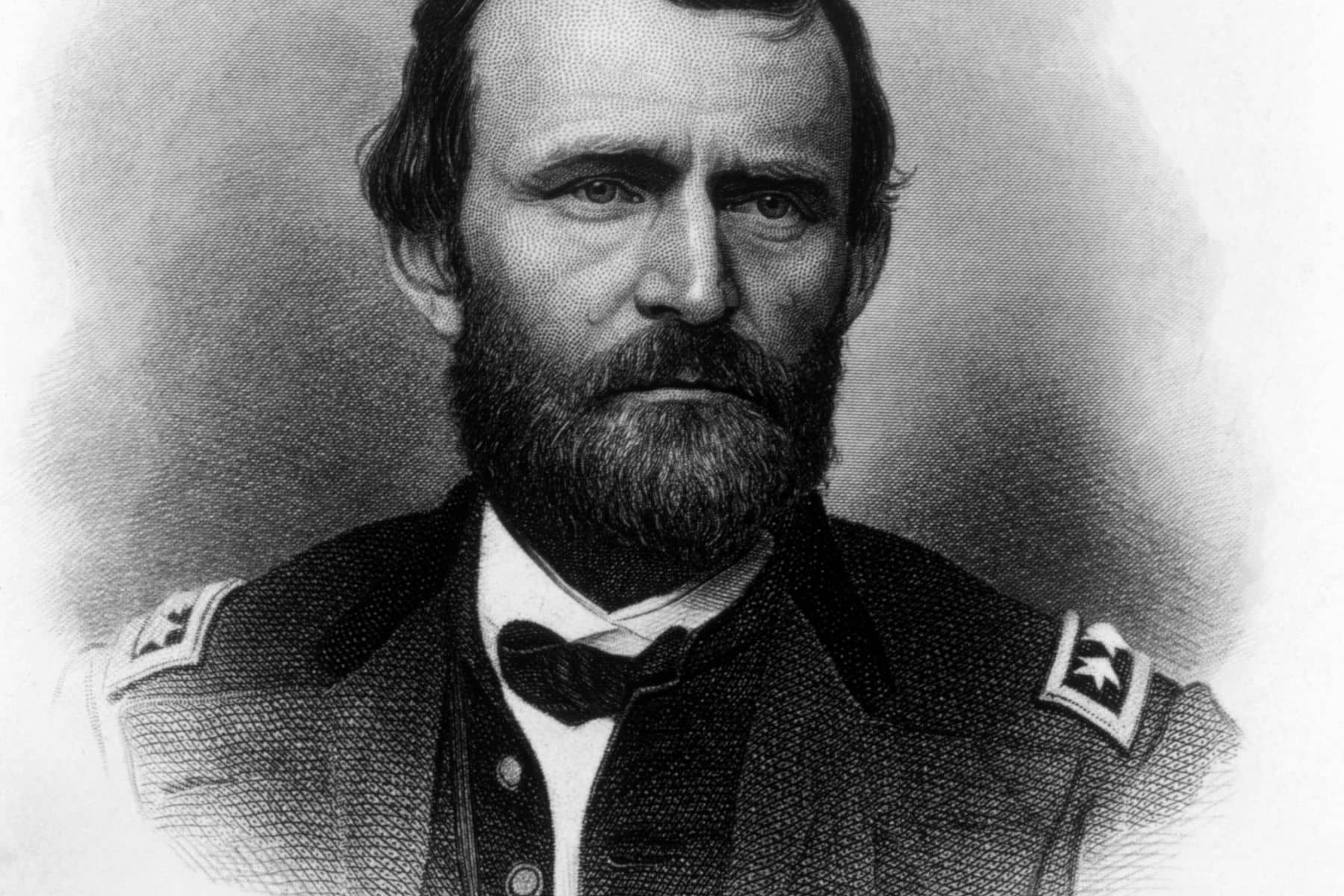
Why You Should Visit The U.S. Grant Historic Site
The Ulysses S. Grant National Historic Site is the home of the 18th President U.S. Grant and his wife, Julia Dent.
Visitors to the site have the opportunity to see a film on Grant’s life, tour a museum featuring exhibits which outline his achievements and tour the grounds where he lived. I would recommend beginning your tour by watching the 22-minute orientation film.
It provides insights into Grant’s military service during the American Civil War and his two terms as President of the United States.
The museum is located in a horse stable designed by Ulysses S. Grant and completed in 1872. It’s totally self-guided so feel free to take your time while exploring the museum’s six permanent exhibits.

RELATED: 10 MUST-SEE Historic Sites In New York
2. Harry S. Truman National Historic Site
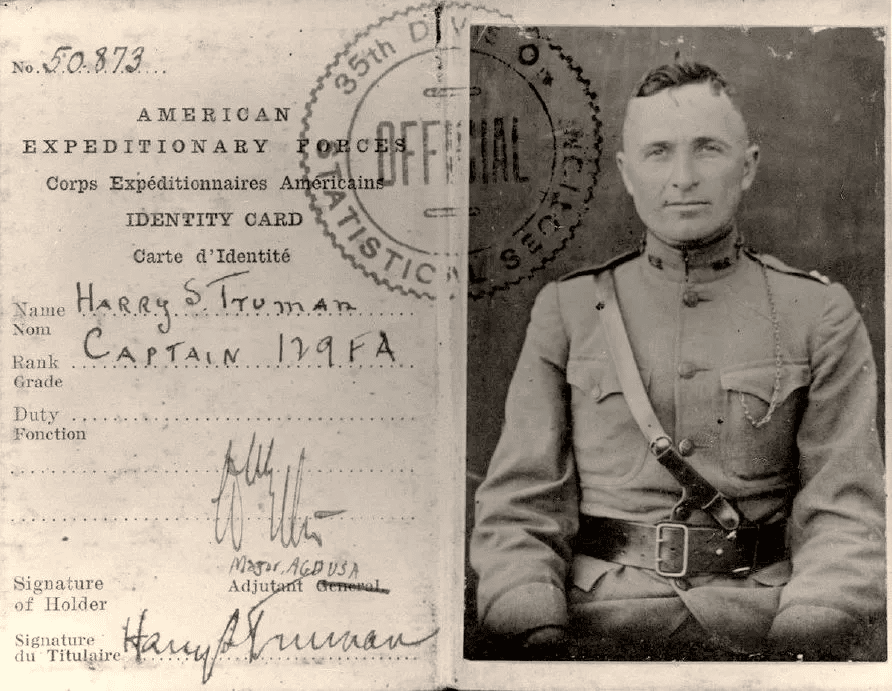
We’re on to our final two historic sites. In the runner-up position at #2 is a site which honors a man who many consider to have been one of America’s best presidents of the 20th century. It’s the Harry S. Truman National Historic Site.
Harry S. Truman (1884-1972) was the 33rd President of the United States, serving from 1945 to 1953. He became President following the death of President Franklin D. Roosevelt in April of 1945.
During his presidency, Truman oversaw the end of World War II and the beginning of the Cold War. He made the controversial decision to drop atomic bombs on the Japanese cities of Hiroshima and Nagasaki, which ultimately led to Japan’s surrender and the end of the war in the Pacific.
Truman also implemented the Marshall Plan, which was a program designed to provide economic assistance to Western European countries to help them rebuild after World War II. He was also a strong advocate for civil rights and signed executive orders desegregating the armed forces and federal workplaces.
In addition, Truman was instrumental in the establishment of the United Nations and played a key role in the creation of the North Atlantic Treaty Organization (NATO). He also supported the creation of the State of Israel, which was established in 1948.
A National Historic Site Worth Seeing
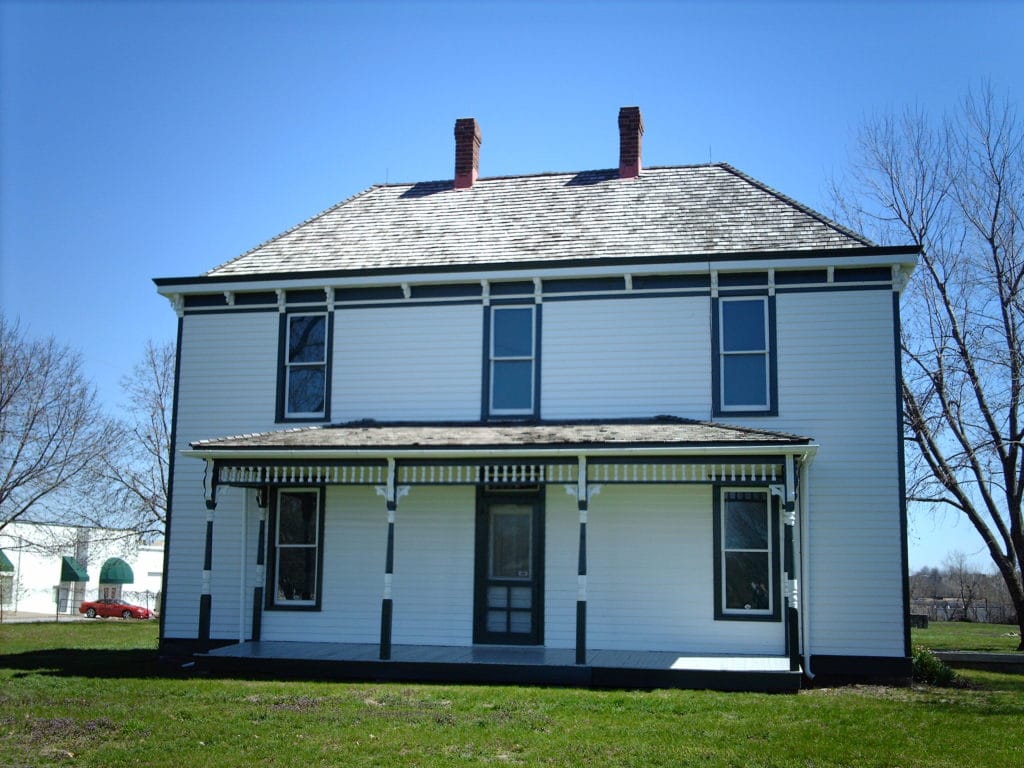
You can learn more about this remarkable leader by visiting the Harry S. Truman National Historic Site. This site is made up of five houses in Independence and Grandview, Missouri. It features locations that are important during the years before and after Truman lived in the White House.
Visitors can tour the original Truman home and follow in his footsteps with a walking tour of Truman’s neighborhood. They can also visit the family farm in Grandview, explore exhibits about his private life in his cousin Noland’s house and examine oral histories from people who knew him well.
Also in Independence, Missouri, is the Harry S. Truman Presidential Library & Museum. There visitors can learn about all things relating to Truman and his presidency.
1. The Gateway Arch
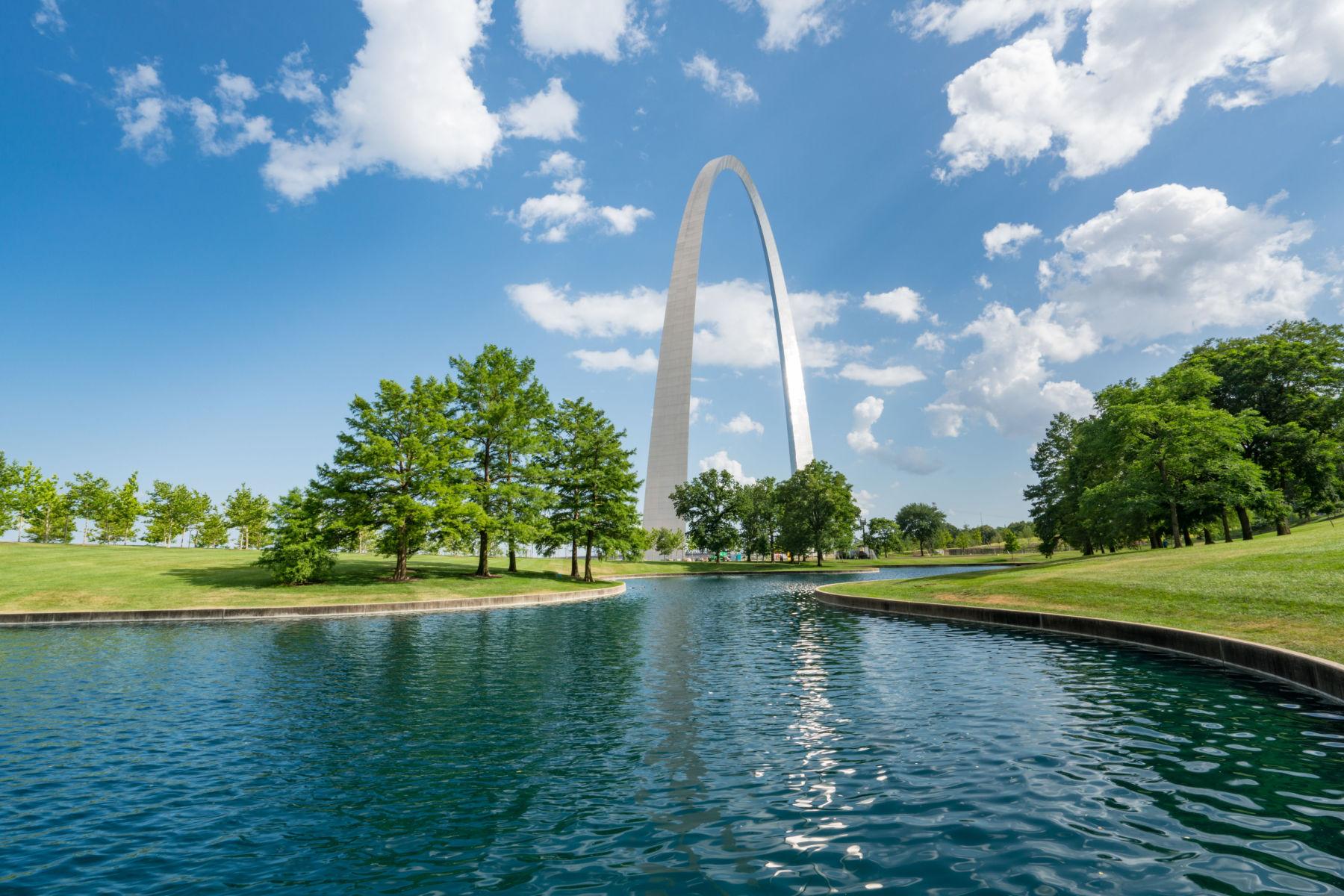
Just because We’re More Than Just Parks doesn’t mean that we’ve forgotten about them! As the #1 Historic Site In Missouri we have chosen the Gateway Arch, which happens to be a part of Gateway Arch National Park. So, our message to you is see the arch and the park.
The Gateway Arch symbolizes Missouri’s important role in the Westward Expansion of the United States during the nineteenth century. It’s also the entrance to one of America’s 63 national parks.
At a mere 91 acres, it’s a part of Gateway Arch National Park which is the smallest national park in America. It doesn’t even have a natural area. So why, you might ask, is it a national park? That’s a good question.
But we try answering that question, we’ll give you a little bit of the history of this special place.

Jefferson’s Vision
St. Louis was the capitol of the Louisiana Territory from 1812 until Missouri gained statehood in 1821. It was the vision of America’s third president, Thomas Jefferson, that Missouri should serve as the “Gateway to the West.” That vision is symbolized today by the iconic Gateway Arch.
In describing the arch, Kimberlee N. Ried writes:
“It rises gracefully toward the sky, then elegantly curves back toward Earth as the combined waters of the Mississippi and Missouri rivers swiftly flow by at its base—a symbol of the accomplishments and dreams that drive the American experience.” (Source: Kimberlee N. Ried, A Gateway to the West, Prologue Magazine, Fall 2016, Vol. 48, No. 3)
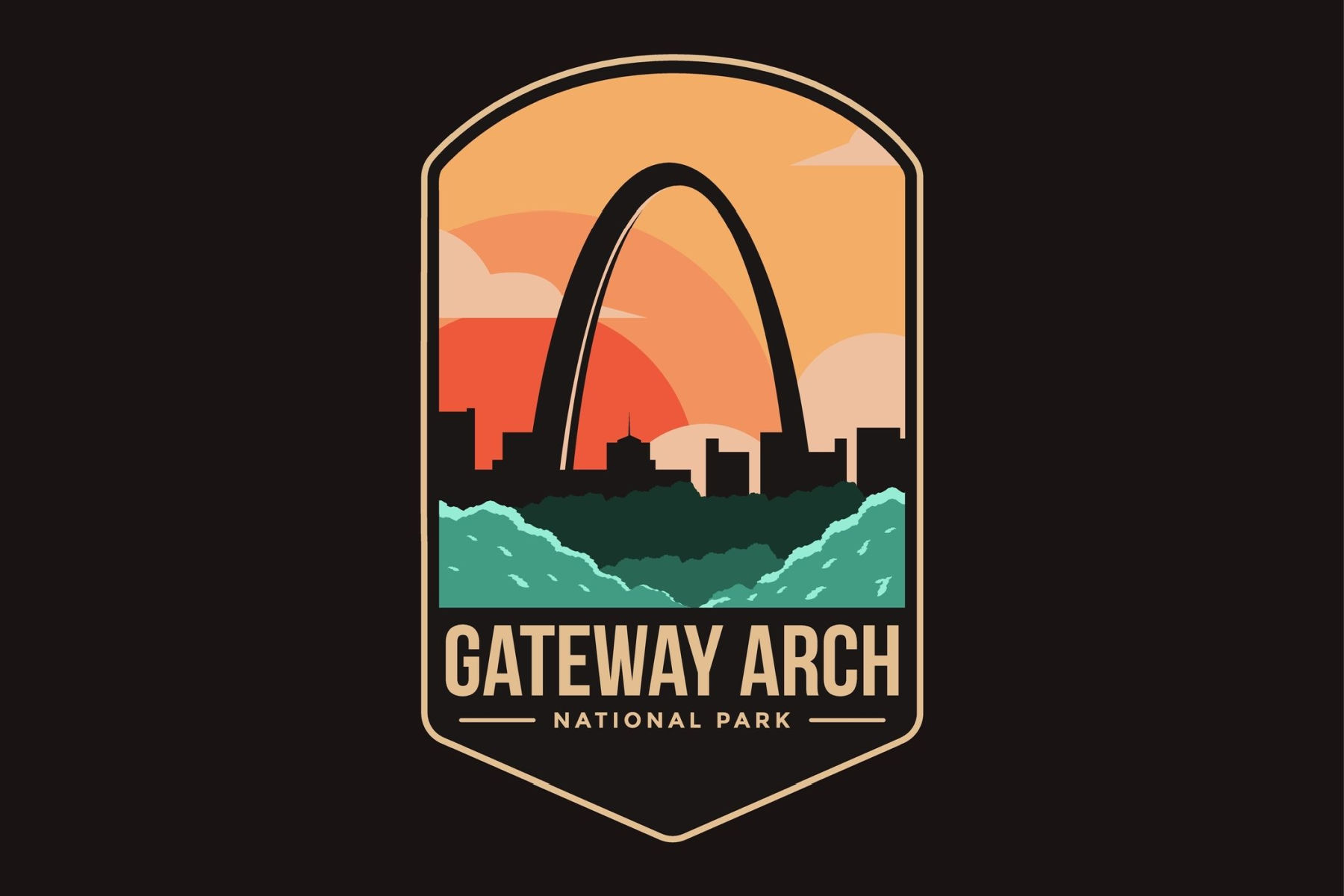
From Sea To Shining Sea
The arch represents the jumping-off point of 19th century America’s age of westward exploration. From the newly acquired Louisiana Purchase to Lewis & Clark’s Corps of Discovery and the subsequent westward expansion of the North American continent, it is the doorway to America’s “manifest destiny.”
Symbolically speaking, a journey through this fabled arch signifies our nation’s grand mission to occupy all of the land from sea to shining sea.
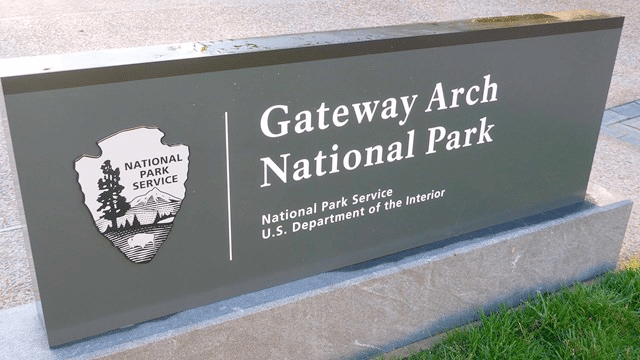
The Best Visitor Center & Most Expensive

Before becoming a flagship national park in 2018, the Gateway Arch Visitor Center underwent a $380 million dollar renovation. That’s right! $380 million dollars!
Totaling more than 150,000 square feet, it’s accessed by a semi-circular entryway that is accentuated by the site’s curving geometry. The lobby is actually dug into a berm and organized around a circle of water. An artistic masterpiece!
The Gateway Arch
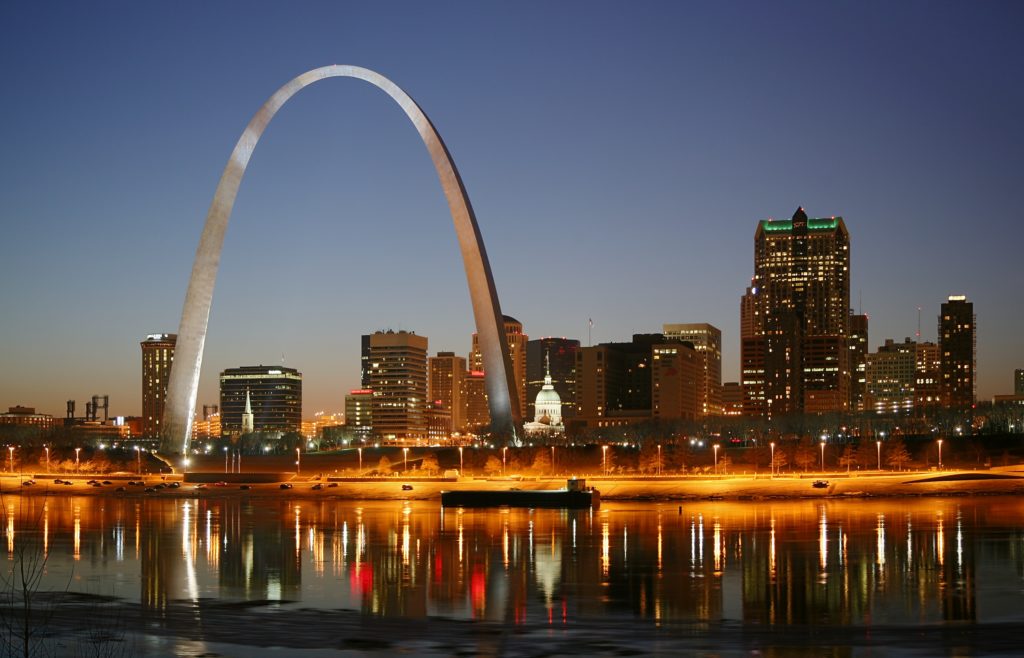
Speaking of artistic masterpieces, is it possible to provide enough superlatives about that magnificent archway? I think not.
At 630 feet about the Mighty Mississippi River, the Gateway Arch is one of the most recognizable and beloved landmarks in the United States.
The monument we know today first began in 1935, when President Franklin D. Roosevelt designated property along the St. Louis riverfront to be developed as the Jefferson National Expansion Memorial (now known as Gateway Arch National Park).
Eero Saarinen’s Vision
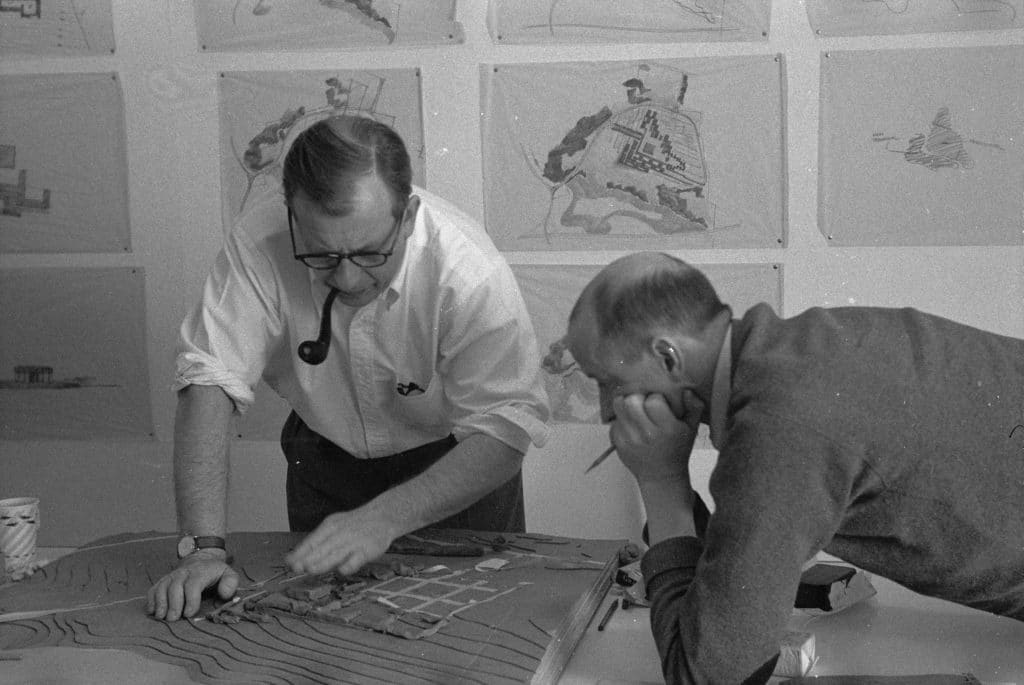
A nationwide design competition was launched in 1948 to determine what shape the Memorial would take. Architect Eero Saarinen’s design won and, in 1963, construction began on a stainless steel arch.
It was completed two years later in 1965. Today, it stands as a symbol of national identity and an example of mid-century modern design.
Visitors need to check out the breathtaking view at the top of the arch. One side overlooks the Mississippi river and Illinois while the other overlooks the city of St. Louis with Busch Stadium and downtown in the background. It’s well worth a trip to the top to see this amazing view.
Luther Ely Smith Park
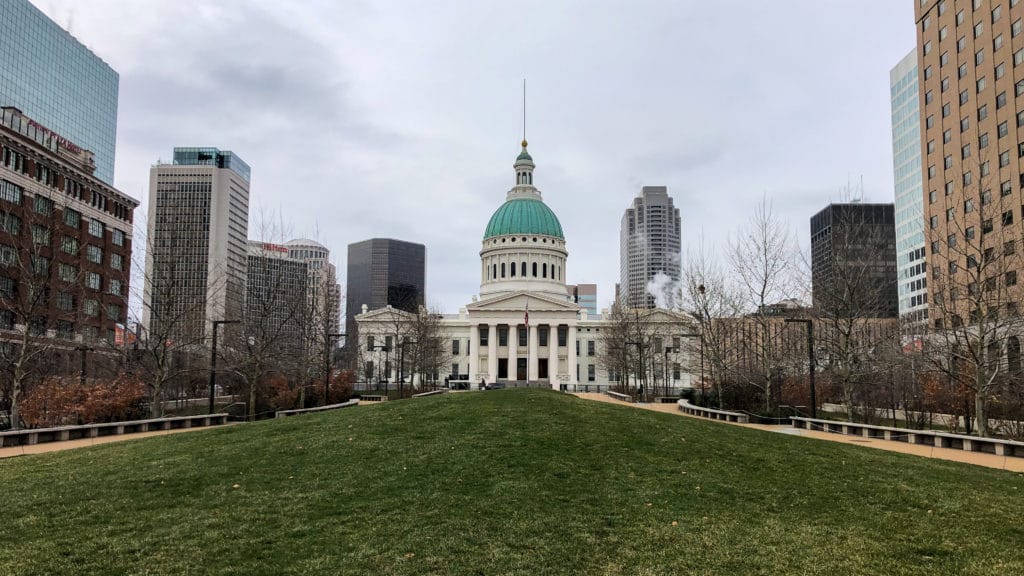
Luther Ely Smith was a 19th century St. Louis lawyer and civic booster who first proposed a riverfront memorial for President Thomas Jefferson. It was his efforts which led to the creation of the Gateway Arch.
It is therefore fitting and appropriate that the park which bears his name should welcome visitors to the Jefferson National Expansion Memorial and Gateway Arch National Park.
So, Why Did It Become A National Park?

Sometimes, it’s more important who you know than what you know. Missouri’s Senator Roy Blunt sponsored changing the Jefferson Expansion National Memorial from a national memorial to a national park.
What is the National Park Service’s definition of a national park? Simply put, “a national park contains a variety of resources and encompasses large land or water areas to help provide adequate protection of the resources.”
Does Gateway National Park meet this definition? No.
I guess that old saying is true. It’s more important who you know than what you know.
RELATED: 6 GREAT Missouri National Parks
List Of Historic Sites In Missouri
- The Gateway Arch
- Harry S. Truman National Historic Site
- Ulysses S. Grant National Historic Site
- George Washington Carver National Monument
- Wilson’s Creek National Battlefield
- Mark Twain Boyhood Home & Museum
- Laura Ingalls Wilder Home & Museum
- Missouri Botanical Gardens
- Patee House
- Mutual Musicians Foundation Building
Why Trust Us About Historic Sites In Missouri?
We’re Jim Pattiz and Will Pattiz, collectively known as the Pattiz Brothers and we absolutely LOVE the national parks.
You should probably know that we don’t just make this stuff up out of thin air. We’ve spent our entire adult lives exploring and filming America’s national parks and public lands.
We’ve worked with the National Park Service, the Department of Interior, USDA, U.S. Forest Service, and more for years creating films on important places and issues. Our work has been featured in leading publications all over the world and even some people outside of our immediate family call us experts on the national parks.
And, in 2018, our father – having spent a lifetime teaching history – joined us so that he could help us to tell the stories behind these amazing places.
Meet The Parks Brothers
We Hope You’ll Follow Our Journey

Our goal here at More Than Just Parks is to share the beauty of America’s national parks and public lands through stunning short films in an effort to get Americans and the world to see the true value in land conservation.
We hope you’ll follow our journey through the parks and help us to keep them the incredible places that they are. If you’re interested in joining the adventure then sign up below!
Related Links
What Is A National Park? To learn more about the difference between the various National Park Service designations check out our article that explains everything!
Civil War Sites: 10 BEST Civil War Sites In America
Missouri National Parks: 6 GREAT Missouri National Parks
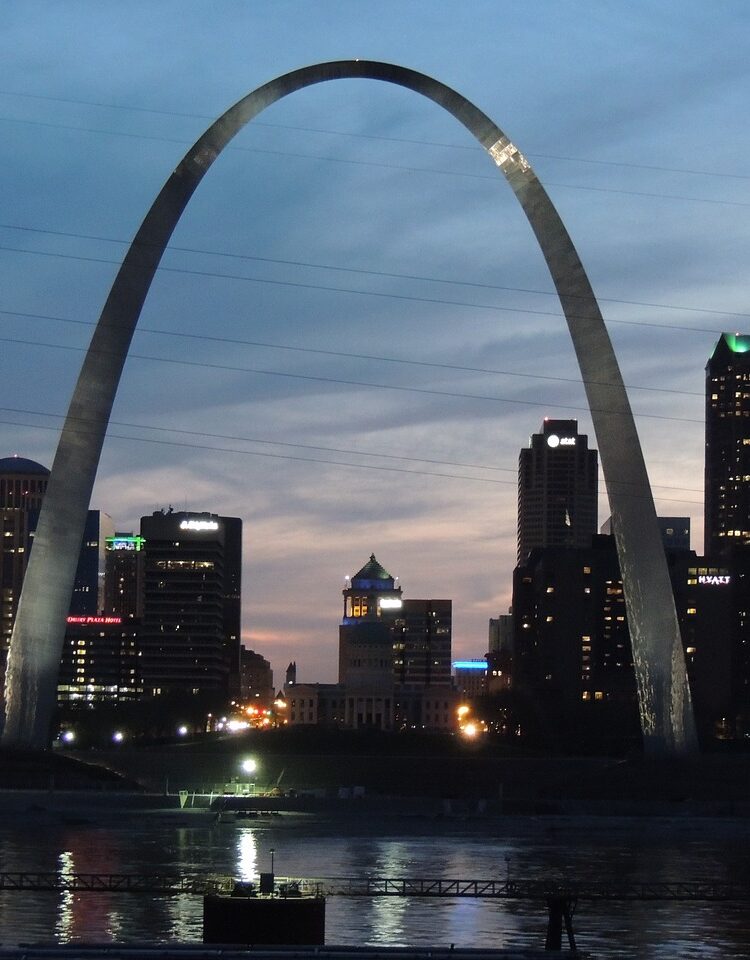
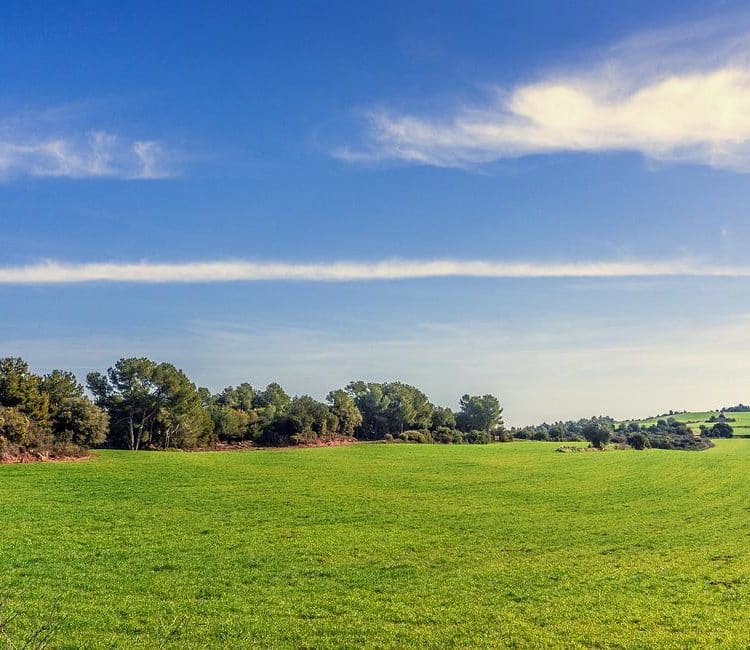
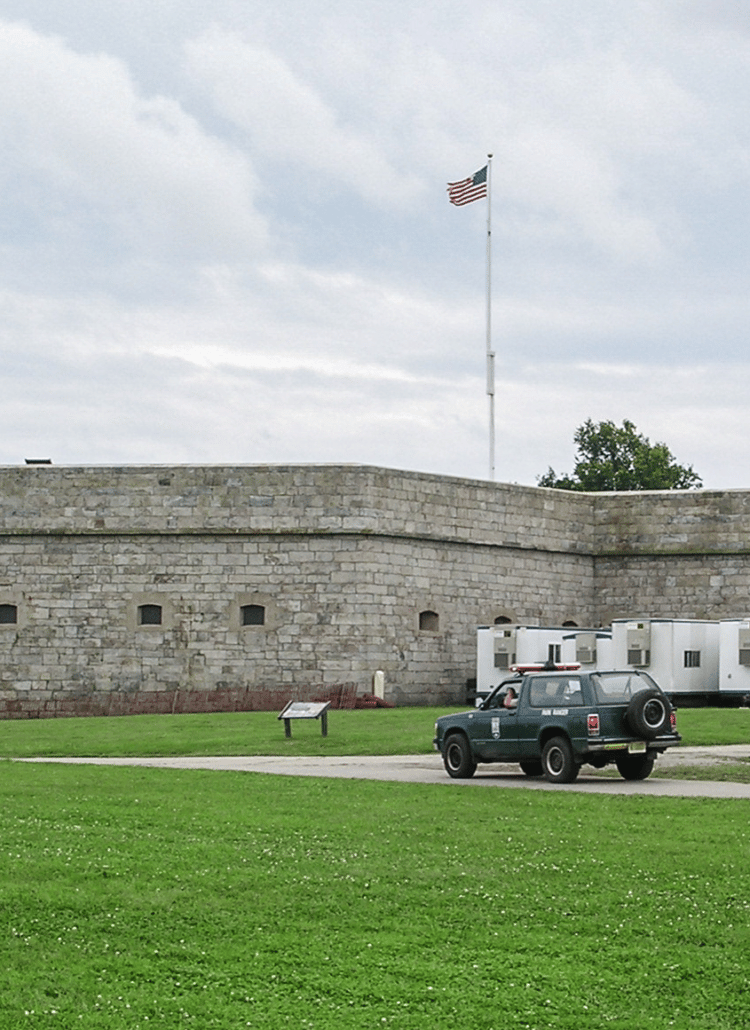


Leave a Reply